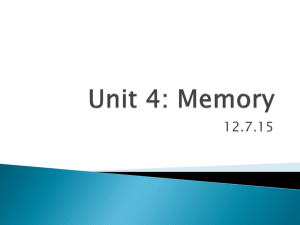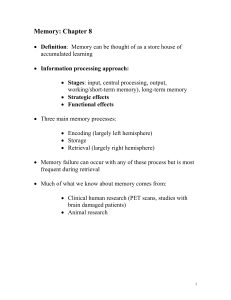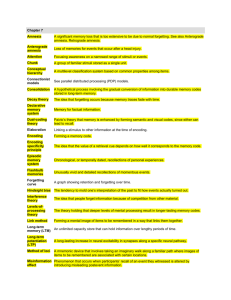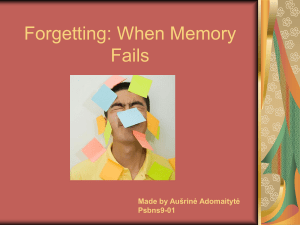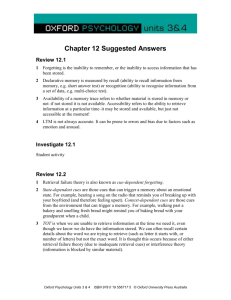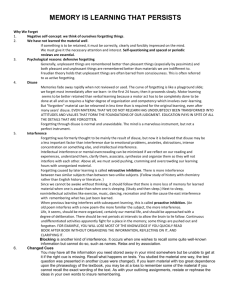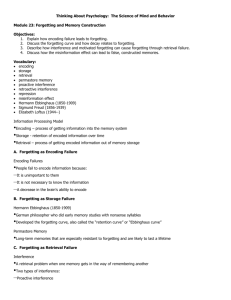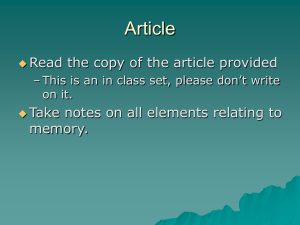Basic memory (cont.) What does it mean to forget? Possible ways of
advertisement
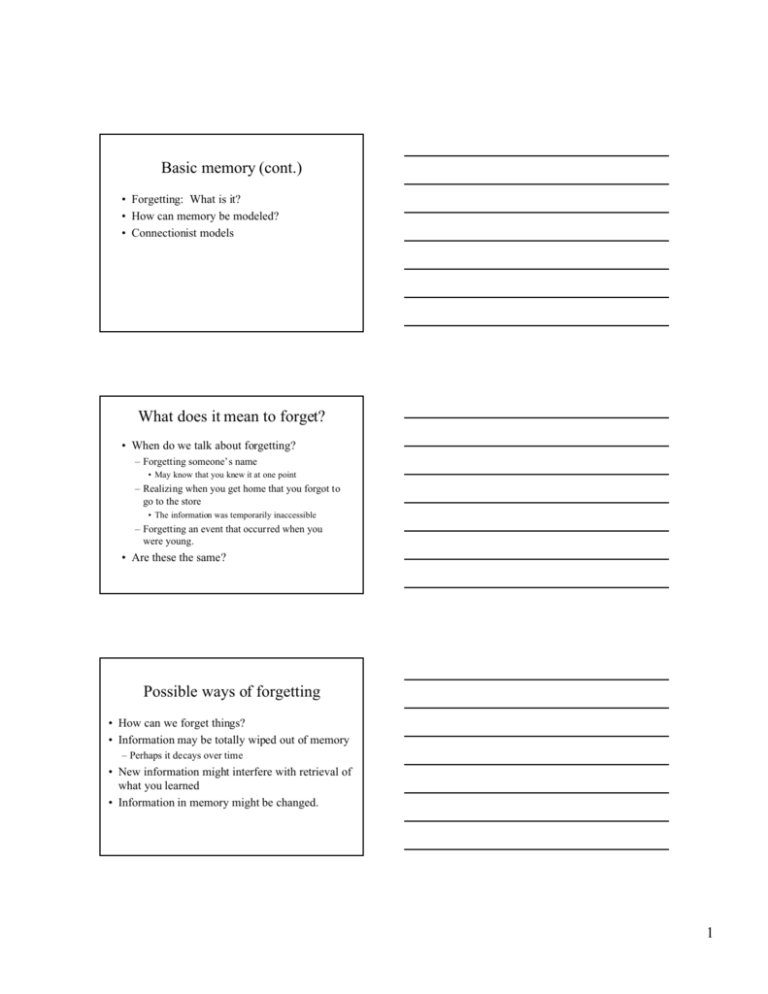
Basic memory (cont.) • Forgetting: What is it? • How can memory be modeled? • Connectionist models What does it mean to forget? • When do we talk about forgetting? – Forgetting someone’s name • May know that you knew it at one point – Realizing when you get home that you forgot to go to the store • The information was temporarily inaccessible – Forgetting an event that occurred when you were young. • Are these the same? Possible ways of forgetting • How can we forget things? • Information may be totally wiped out of memory – Perhaps it decays over time • New information might interfere with retrieval of what you learned • Information in memory might be changed. 1 How could we tell? • Failing to recall is evidence of forgetting – Not evidence of why forgetting occurred. – Recall may not be a very sensitive measure • Savings in relearning – Goes back to Ebbinghaus (late 19th century) – Learning something once may ease relearning it later. • Burtt(1941) – Greek passages read to a toddler (15 m.o.) – Old passages re-learned faster than new ones at ages 8.5, 14, and 18 – Amount of savings declined over time. Recall vs. recognition • Recognition is also generally more sensitive than recall – Contains more of the original learning context • Intentional forgetting experiments (Bjork) – People are told to forget all of the words that appear after a signal – Their recall performance for these words is worse than for words they are told to remember – These words are still recognized • Suggests the information is still in memory Decay vs. Interference • Do memories just decay? – Probably not – Learn a list before bed, and recall it when you wake up • Performance is better than if you learn the list in the morning and recall it in the afternoon • Absolute amount of time is not important • Suggests that memories are being interfered with. 2 Types of interference • Retroactive interference Original Interpolated Group Learning Learning Test Experimental List A List B List A Control List A Rest List A Recall is worse. • Proactive interference Prior Group Learning Experimental List B Control None Learning List A List A Test List A List A Recall is worse. • Proactive interference may seem strange. How can interference occur? • One possibility is disruption of context • Other events will share context with the items to be remembered – The more events there are, the less unique the context will be as a retrieval cue. • In your first year, you remember details about classes quite well • By the time you graduate you remember less about each class. – More things are associated with the context. Alteration during storage • Memory is not simply a set of locations. Output Units • Connectionist models – Described in Chapter 6 – The details are complicated. – Just want to give a flavor Input Units 3 The brain is a network • The brain carries information using neurons – Each individual neuron sends signals to other neurons – Neurons are “firing” all the time at different rates – The pattern of firing carries information – That means each neuron is involved in many different patterns. Output Units Input Patterns 1 -1 -1 1 -1 1 -1 1 'CAT' 'DOG' Output Patterns 1 1 -1 -1 -1 -1 1 1 'MEOW' 'BOW-WOW' Input Units Connectionist models • Methods for setting up connections so that input patterns can create output patterns Output Units 1 1 -1 -1 1 -1 -1 1 Connections Input Units Connectionist models (cont.) • The same units (neurons) are used for many inputs • New inputs may interfere with learned memories 1 1 1 -1 -1 -1 -1 1 -1 -1 -1 1 1 -1 1 1 There are more details in Chapter 6 for those who are interested. 4 Summary of memory (so far) • Short term memory (STM) – Limited capacity and duration – Storehouse of information currently active • Working memory • Long term memory (LTM) – Storehouse for what we have learned – Encoding and retrieval interact – Forgetting occurs through interference 5


